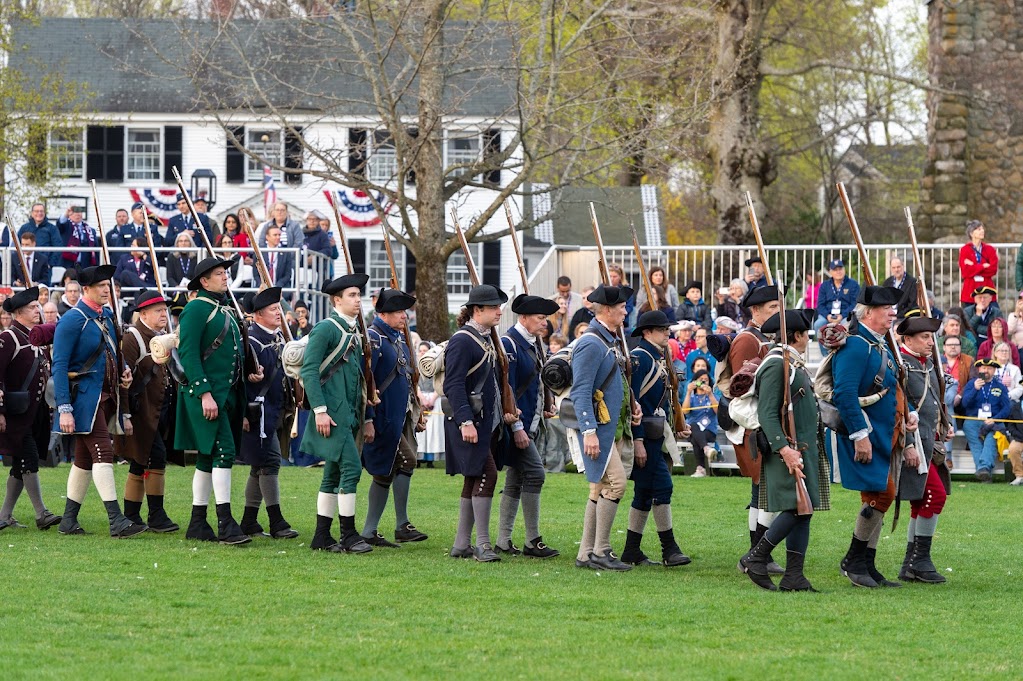
By MAUREEN DOHERTY
LEXINGTON – Thousands of people descended upon the Lexington Green in the predawn hours on Saturday, April 19 to witness the historic battle between the Lexington Minutemen and British regulars that sparked the American Revolution precisely 250 years earlier.
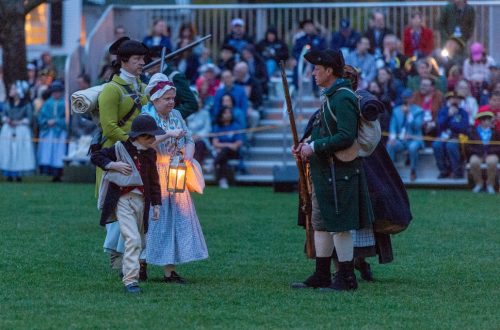
Under the cover of cloudy skies with the only light provided by a sliver of the moon, the Minutemen were barely visible as they began to nervously paced the common in pairs or alone, their muskets affixed with bayonets in hand, just a few hours after receiving word from Paul Revere that the British were coming.
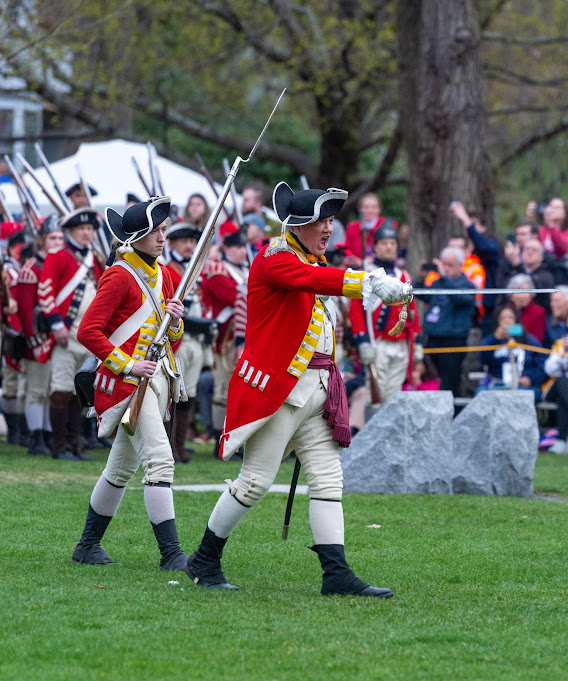
As dawn starts to break, the narration of events leading up to the battle begins. The crowd cheers and applauds as the narrator states: “Two hundred and fifty years ago, on the dawn of April 19, 1775, this common became the birthplace of American Liberty!”
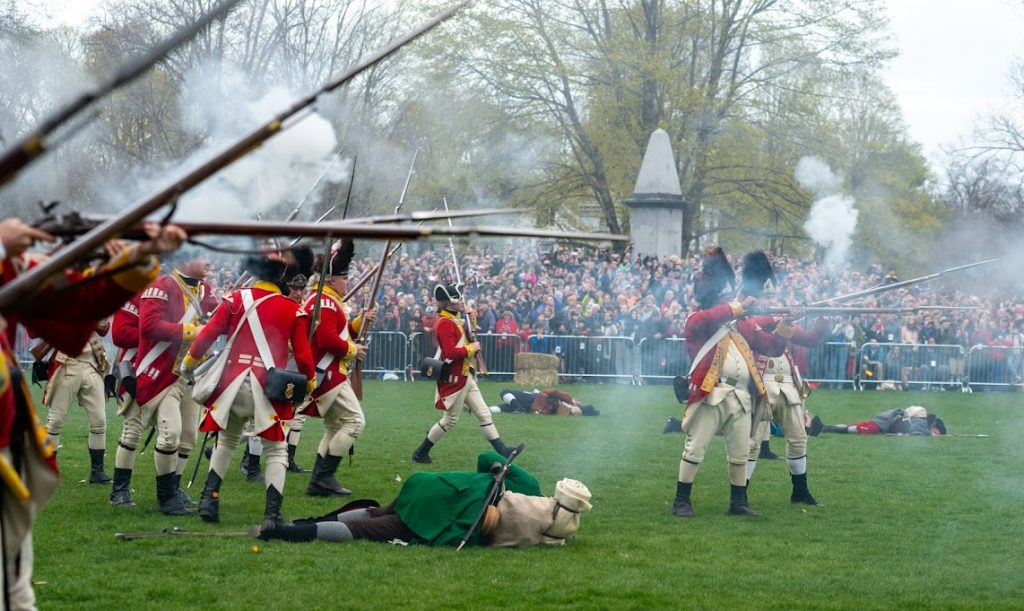
The 70 or so reenactors, all members of the Lexington Minutemen, were joined by several hundred reenactors representing the British soldiers who traveled from across the country as well as from England to partake in the historic occasion.
The reenactment opened with the women of the town awakening their children and instructing them to get dressed and gather provisions and valuables before leaving their homes for their own safety. They frantically rush over to the town common to bid farewell to their husbands, fathers, brothers, cousins and neighbors before departing ahead of the arrival of British regulars.
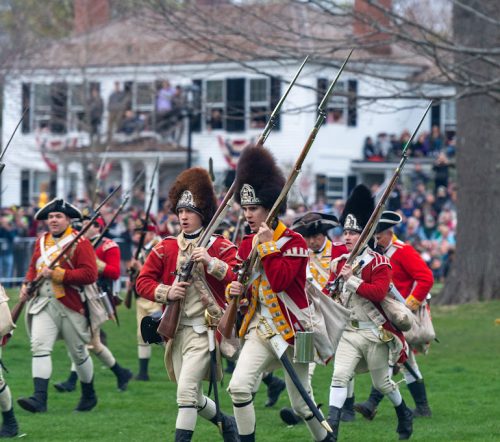
Roll call is taken and the Minutemen are instructed by Capt. John Parker to stand their ground and hold their fire unless fired upon. As dawn breaks, a British light infantry, under the command of Maj. John Pitcairn, arrived at the green under orders of Lt. Col. Francis Smith, commander of the expedition to Concord who had learned from his own scouts that the local militia might try to oppose them.
The Minutemen stood their ground even as Pitcairn ordered them to lay down their arms and go home. Capt. Parker ordered his men to disperse but not all of them heard the command. One shot is fired — it was never determined which side fired it — and the battle ensues with a musket volley followed by both sides charging, bayonets in hand. When Lt. Col. Smith arrived he ordered his men to return to their ranks. Within minutes, it was over and eight Minutemen lay dead on the green and eight more were wounded. Smith and his troops marched on to Concord intent on seizing arms and ammunition while the Lexington Minutemen regrouped.
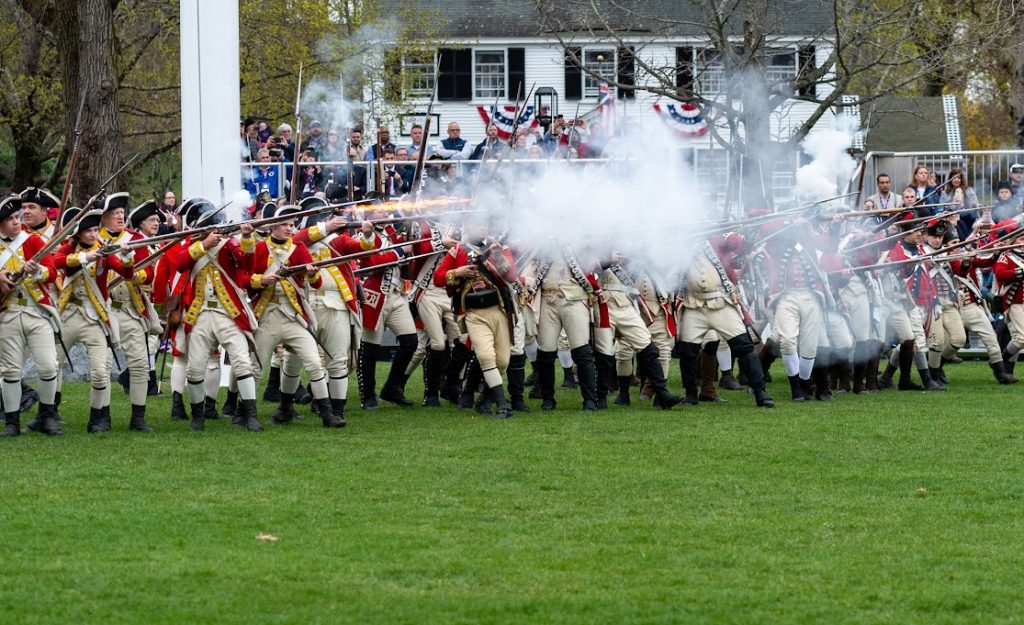
At Saturday’s reenactment, the large crowd of spectators booed loudly as the Redcoats marched off the Lexington Green headed toward Concord.
But upon their arrival in Concord, the British were forced to retreat by the 500 Militiamen they had encountered. As the British retreated back to Boston, Capt. Parker’s men participated in an attack later dubbed “Parker’s Revenge.” They hid behind trees and rocks, and fired upon the Redcoats all along the route. The Colonists killed 79 British soldiers, wounded 174, and lost 49 of their own men and thus began the American Revolution.
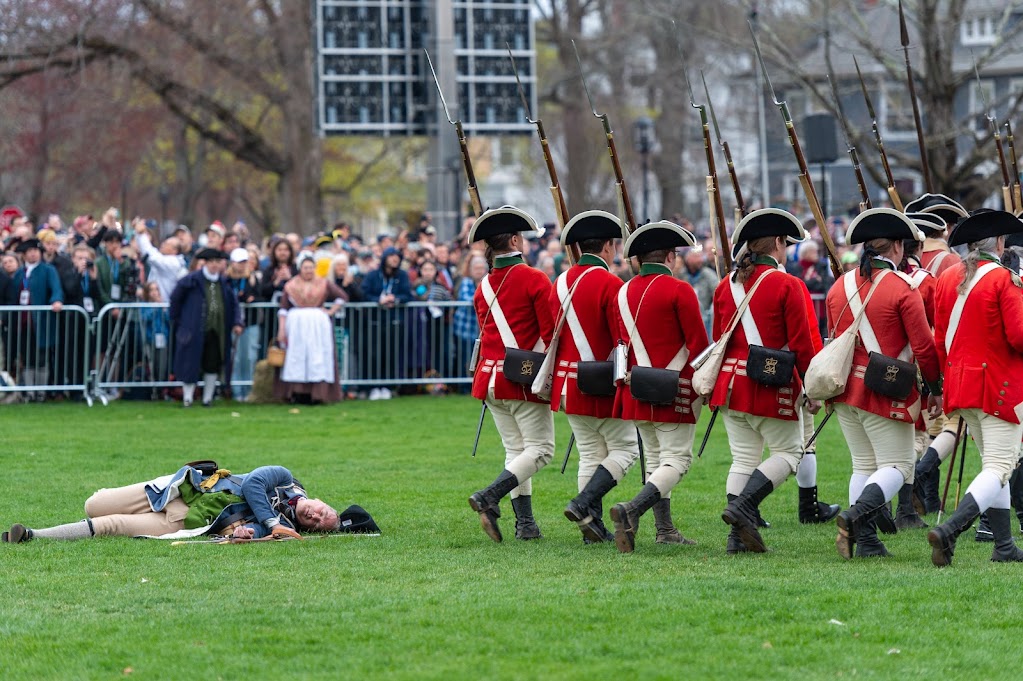
Information from the New England Historical Society is included in this story.
